Curious Sights That Are Truly Made In India
To those of us who have never visited, India is a place of dazzling colors, beautiful traditions, and aromatic spices. The historical heritage, though, is where so much of the beauty lies. It is a country with more culture and more diversity than most. India is the second most populated country on the planet, with over 1.366 billion people, as of the 2019 census. It is a diverse ecosystem for some of the world’s most miraculous fauna and flora. The Republic of India has been a secular federal republic since 1950. No queen, no king, just a parliamentary system with no set religious rules. It is also multilingual, as well as multi-ethnic. India also has one of the fastest-growing major economies in the world, with an ever-expanding middle class. Today, we’re going to talk about some of the funnier things that make visiting India and her people a once-in-a-lifetime experience.
Bull In The China Shop
Cows are sacred animals in many parts of the country, partly because in ancient times, farm animals were considered as equals when it came to the work load. As such, cows have remained an animal to respect and treat with reverence.
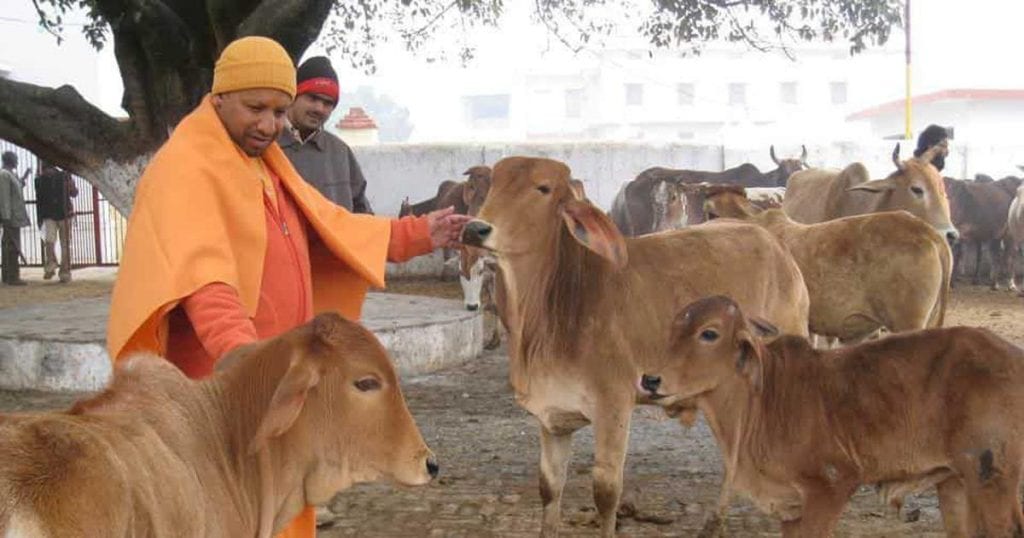
Of course, the religious significance of cows in several different religions practiced in India also contributes to the gentle treatment they are given. Those that view cows as an animal to be revered and protected include sects of Hinduism, Sikhism, Jainism, Buddhism, and Zoroastrianism.
A Mix-Up
There is a huge market of knockoff brands and items in India. It’s basically an integral part of their economy. One that local enforcement can’t fix. And we’re pretty happy if they never do, because many of us don’t need the expensive “authentic” brand.

We kind of like having a Nike shoe with the Puma logo on it. It’s different, and we like to stand out in the crowd. If it looks good and doesn’t cost too much, who really cares? Not us, that’s for sure.
A Strange Passenger
The picture below is rather normal in places like India. They take care of their donkeys when going on long trips! The guy holding the donkey looks like he’s having a good time, and is happy to have a ride.
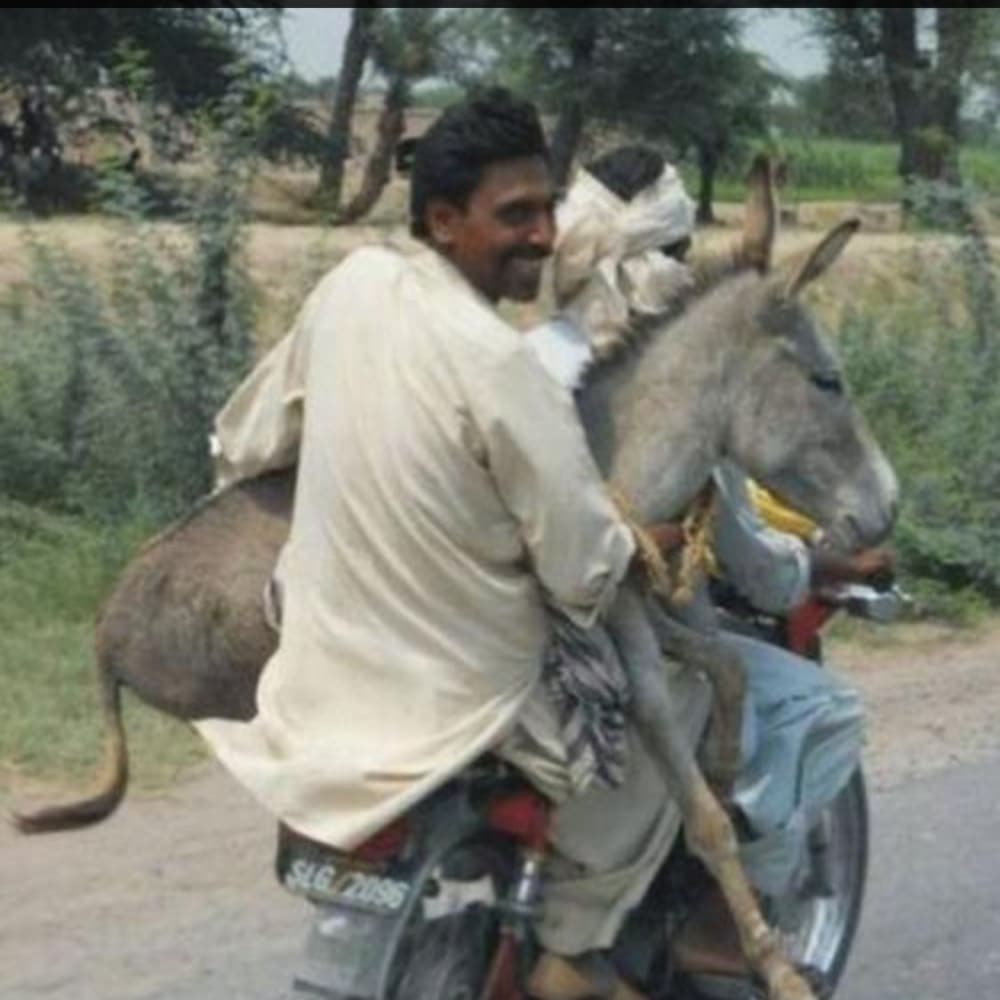
In order to transport themselves from one place to another, some people of that country and area have to be very ingenious. And the same goes for their goods. In many places, a goat or a donkey is an invaluable object.
The Camel
Another animal that’s often associated with India, and pretty much every other country in that part of the world, is the camel. Camels are the equivalent of horses in western culture, and are used in much the same way: for tourism purposes.
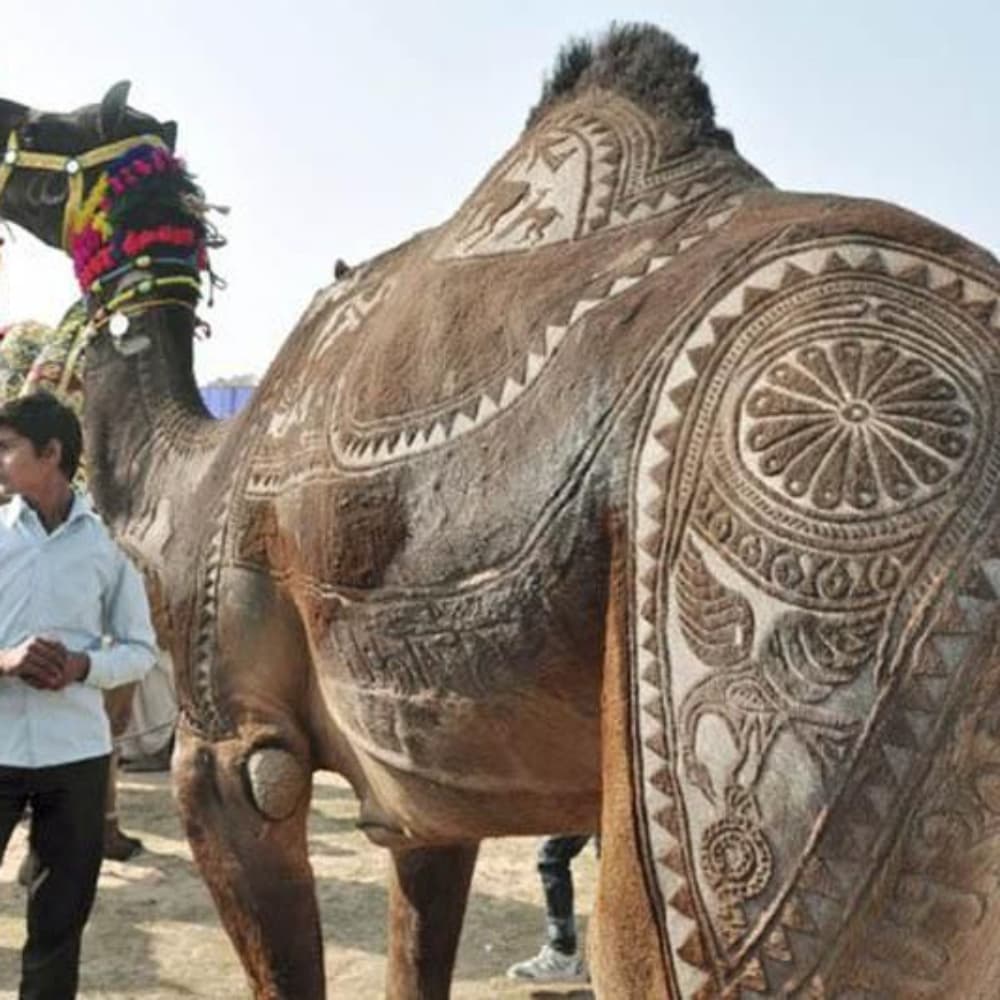
Camels, like the one above, have a certain hierarchy. They are treated with respect, and part of that respect comes with the decorations and patterns seen above. It is a sign that the camel is loved and that it is venerated within a family.
Weird Road Signs
When touring in India, one can get a bit confused by the road signs. They say all roads lead to Rome. Well, in India, they have sort of taken that philosophy and run with it. But why is that? How can a single road lead to the same place 3 times and in 3 separate directions?
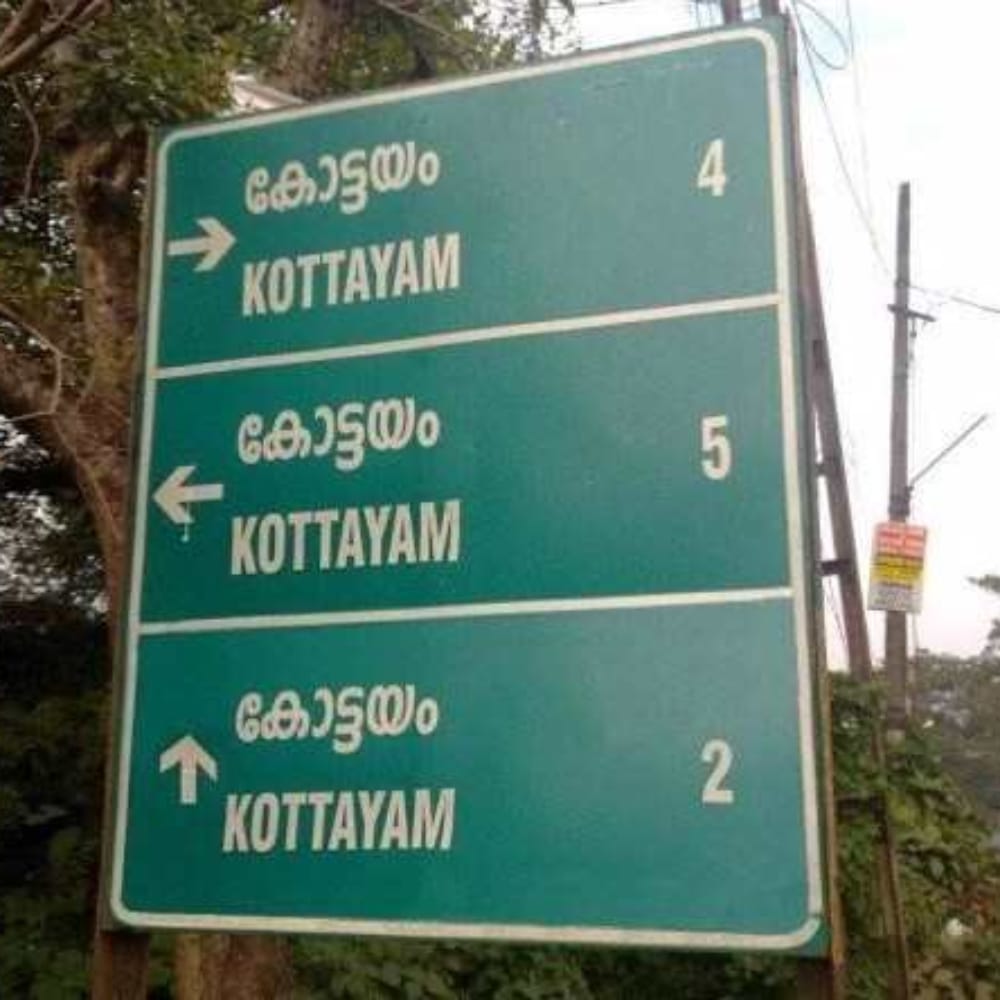
Simple, really. Some roads or regions have seen some rebuilding, and new road systems put in place. But the old ones, the ones they were supposed to be replacing, were never taken out of commission. We imagine it would be a huge job to correct every single sign.
Cows And McDonald’s
As we’ve said, cows are sacred animals in India; that’s why it is one of the only countries in the world where vegan burgers outsell regular beef burgers. McDonald’s has had to adapt to this cultural necessity with a very vegan-friendly menu.
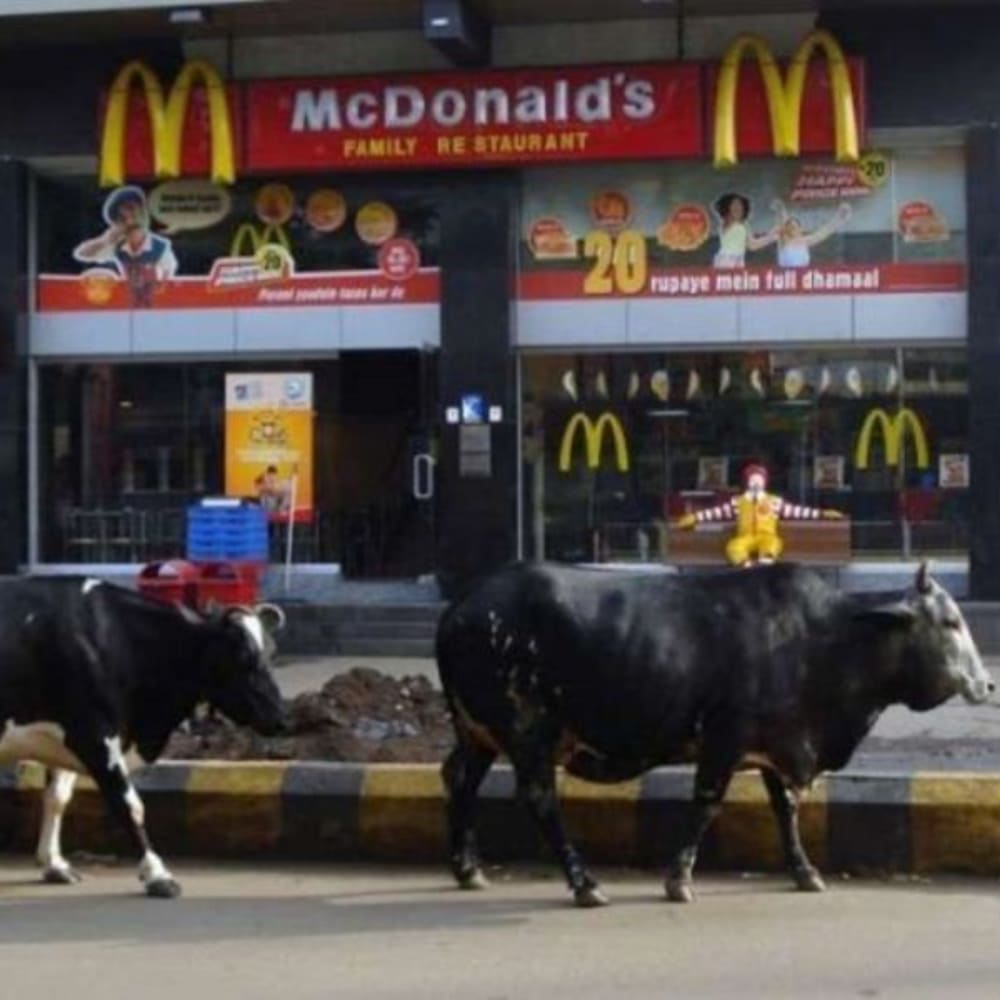
In India, McDonald’s, as well as other fast-food restaurants, have menu options that are not normally seen in the rest of the world. Their franchise does have beef products, but they are not very popular. Its best seller, though? The veggie burger, of course!
Survivors will be prosecuted
The Asian and African continents are two of the only regions where megafauna (really big animals) still prevails. Abundantly. While in other heavily populated places in the world, large animals are not so commonly seen, they still roam free in India.
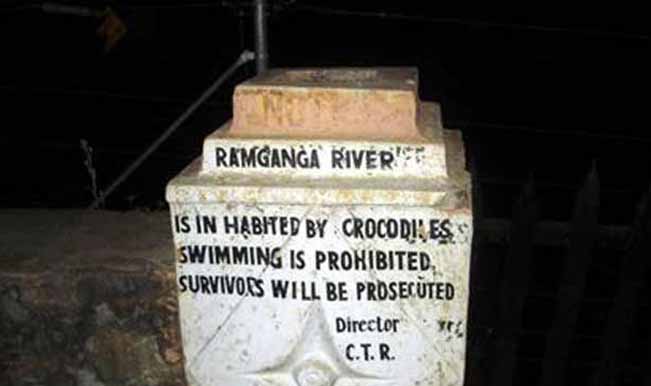
One of the most dangerous predators in the area is crocodiles. These magnificent reptiles dominate large portions of rivers. They are aggressive and territorial, and are known to attack on sight. That is why warnings like the one above are commonplace.
There are over 320 million Facebook users in India, as of January 2020. That’s more than 24% of the population. That might not seem like much, given the number of people living there. But we’re pretty fascinated by this woman’s dedication to the social media site.
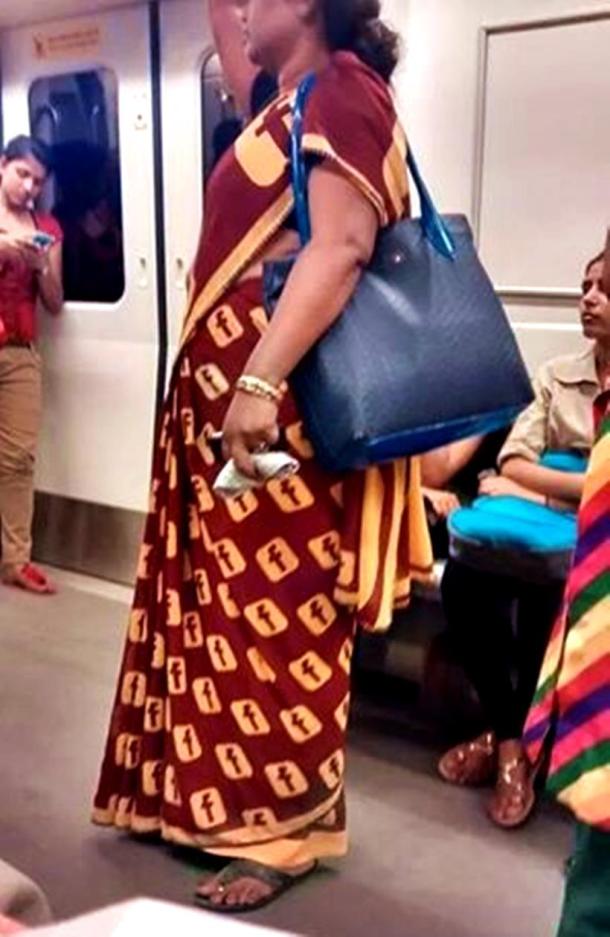
Facebook, like most brands associated with technology in India, is very popular. And we do admit, this is pretty cute if you imagine the Facebook logo as an abstract symbol. Changing up the color scheme was a nice way to accent the funky design.
Creativity
India, as of right now, due to reforms, is one of the world’s fastest-growing economies. People like this are the reason. Sometimes, one needs to think of ways to spend their evenings watching TV or hanging out with family uninterrupted by trips to the kitchen.
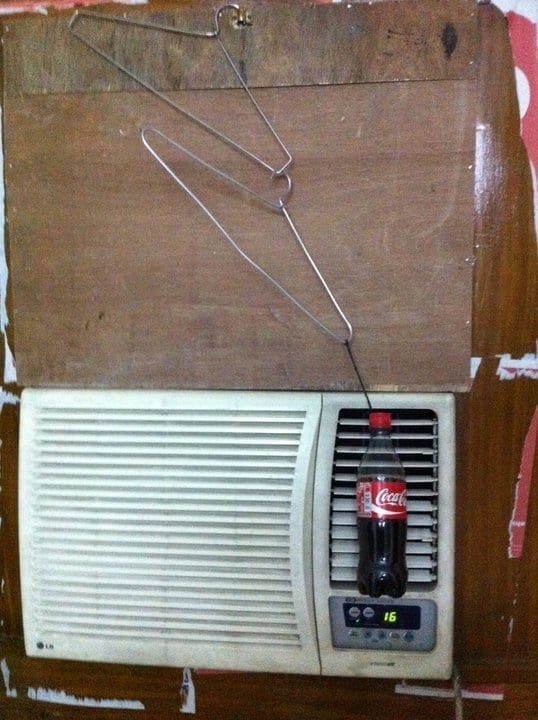
We’ve all been there, but how many of us have been this clever about it? We admire the ingenuity here! Just pop your drink in front of the air conditioner and reach for it when you want it. Whatever works, works, right?
Gogola
Infringement laws are extremely lax in India. Most corporations have few, if any, oversight in the region, and the local police really have no power – or desire – to enforce them. That’s why brands can be reused at the drop of a hat.
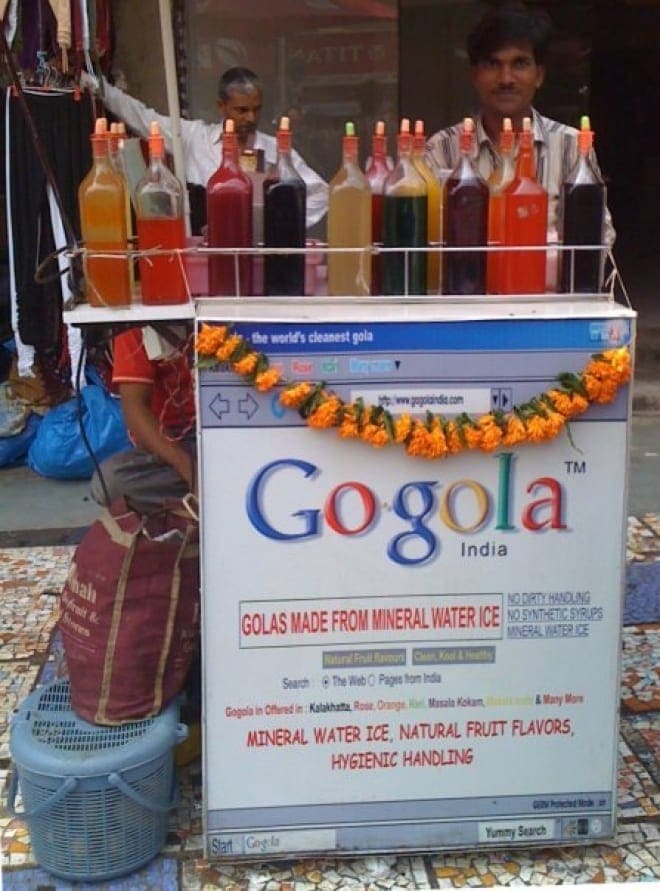
There are thousands of open cases in Indian court filed by large corporations, like Google, on this issue. Few, if any, lead to anything. We’re assuming it’s not anyone’s number one priority. But the familiar color scheme probably attracts a lot of people.
Horn, Please
Multiculturalism lends itself to a diverse language pool. There are over 22 official languages in India and, more importantly, more than 19,500 dialects. India is an extremely diverse region, full of different traditions and languages. English, in many cases, is still the lingua franca.
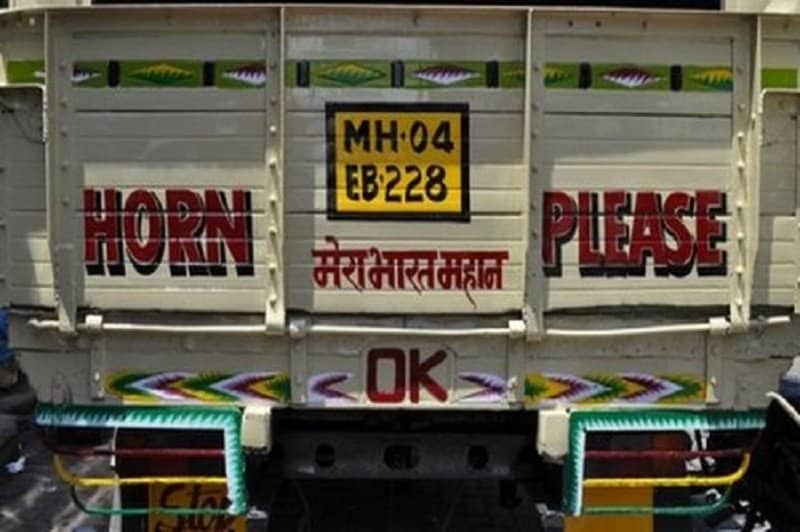
Sanskrit, Manipuri, Marathi, Nepali, Oriya, Punjabi, etc… Communication on the outskirts of the major cities is somewhat precarious and difficult. That is why, given the advances of globalization, many people in India prefer to speak, or at least try to get their meaning across, in English.
Lock Up, Please
Some of us might want to laugh at this picture. Locking up your flip flops? Is that really necessary? Well, we all lock up things that are important to us, don’t we? What’s different about your favorite pair of sandals?
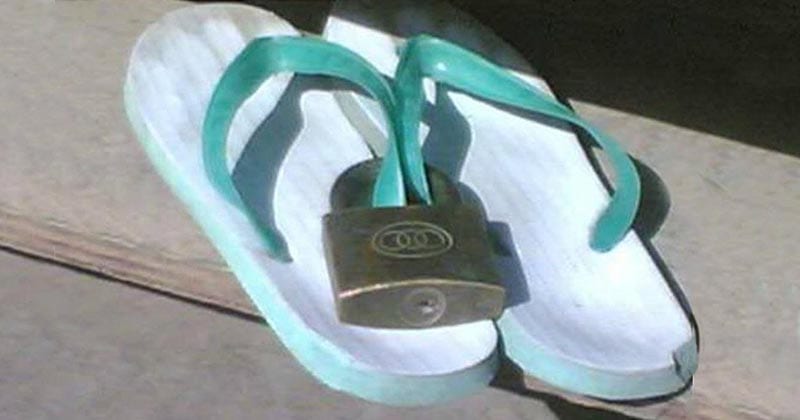
Listen, if you find the right pair of shoes for you, you keep them safe. And if they’re specifically a pair that you keep outside, then having a lock linking them together just ensures they’ll be around in the morning.
Now With H2O
Did you know that only about 2% of the water on earth is considered freshwater? And more importantly, only 1% is actually accessible? In places like India, where over 18% of the world’s population lives, you can imagine just how important it is to have an abundance of water.

Just like the funny translations we see everywhere (not just in India), this one makes us giggle. It feels like the ad is yelling at us. We get it; it’s water. With H2O. Thanks for that. We really do know what it is!
Mangos and Grapes
As we’ve discussed, there are over 19k different dialects in India. The country, an ancient bastion, was under the rule of the United Kingdom up until 1951. As such, being a colony, it adopted a lot of that Empire’s traditions and, more importantly, its language.
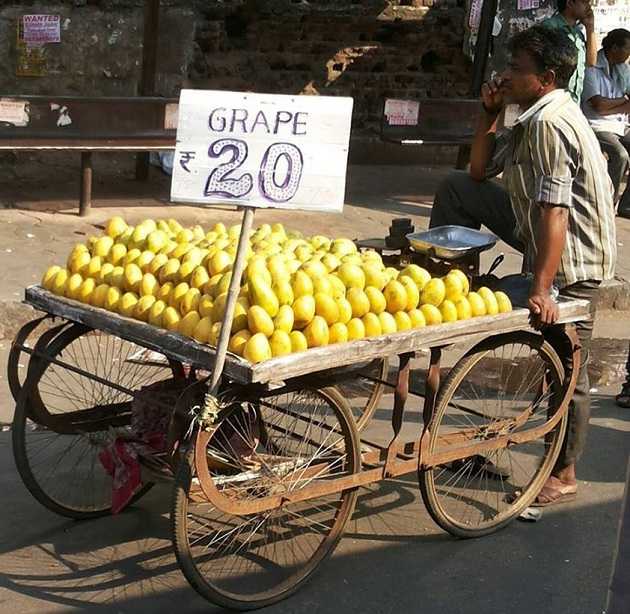
Nonetheless, things are bound to be lost in translation. Things like the difference between a mango and a grape, as seen in the photo above. It’s relatively normal to witness this type of amusing faux pas in India, and foreigners are accustomed to it.
Mannequins
India’s is an up-and-coming economy, which simply means that as a whole, today it is better than yesterday, and so forth. It strives to better itself and its citizens. We love to hear that! And we love seeing this mannequin even more.
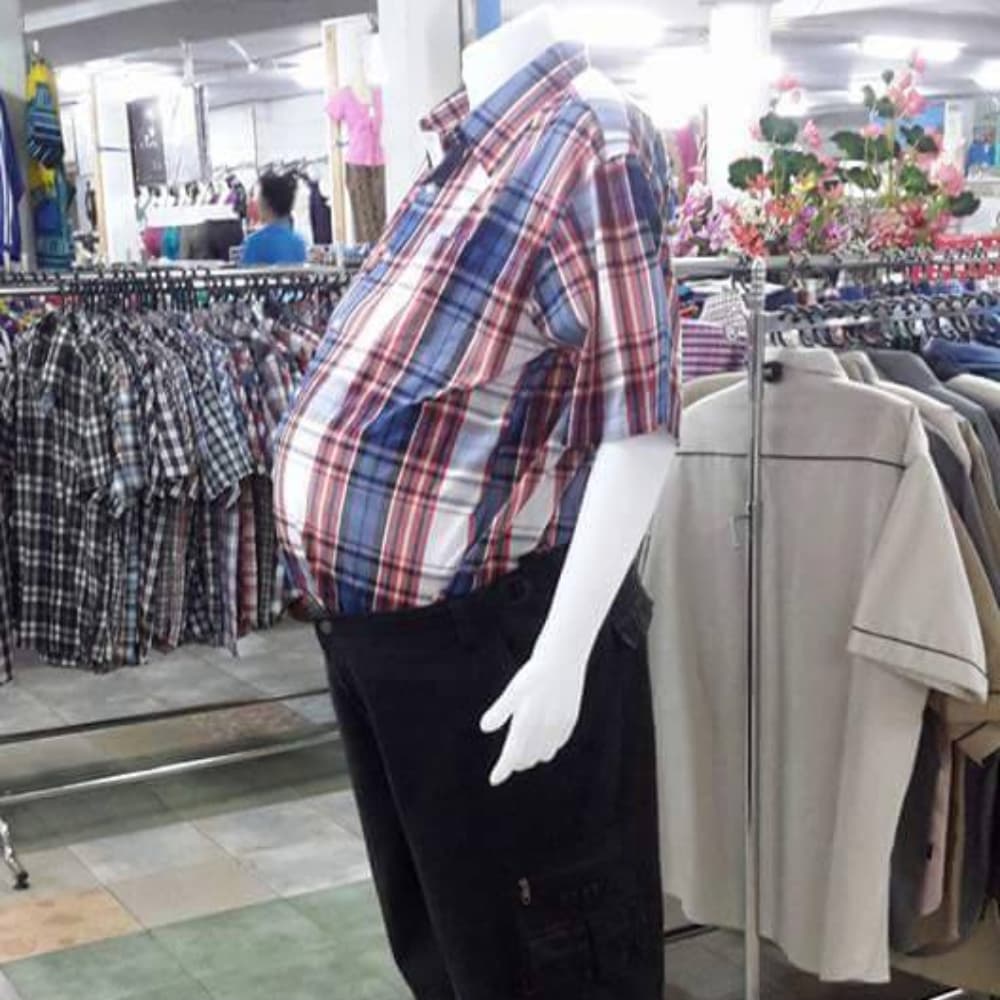
Unlike the traditional mannequins with ridiculously thin bodies, India strives to make their mannequins reflect real people. We really appreciate this, India! This mannequin doesn’t make us at all overly self-conscious about our shapes. Can other countries hop on this train?
Monkeys
Monkeys, who are known for getting into all manners of hijinks at temples and in cities, are also considered holy creatures. They share the same status as cows. As you can see, some of them have become quite comfortable with people.
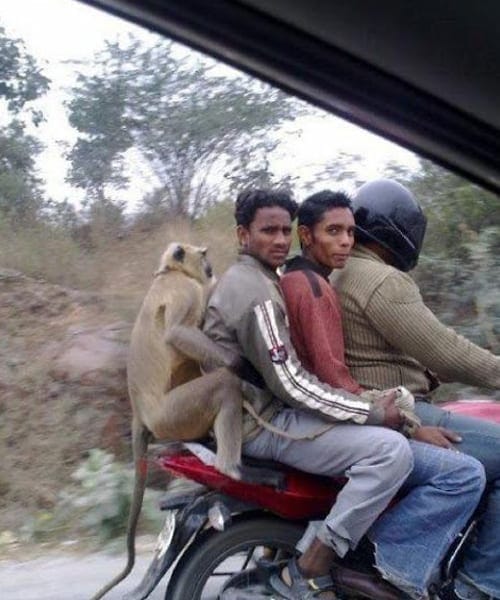
Certain temples devoted to this god – like the Monkey Temple of Galta, Jaipur – are homes to thousands of monkeys. Maybe this one needed to hitch a ride back to his temple. Whatever the case, it looks like everyone is used to this.
Brands
We have talked about India’s obsession with brands, primarily technology-related brands, and their role in the country. Well, the people of India have been using these brands for just about everything you can imagine. Like we said earlier, it helps sales to have a familiar brand.
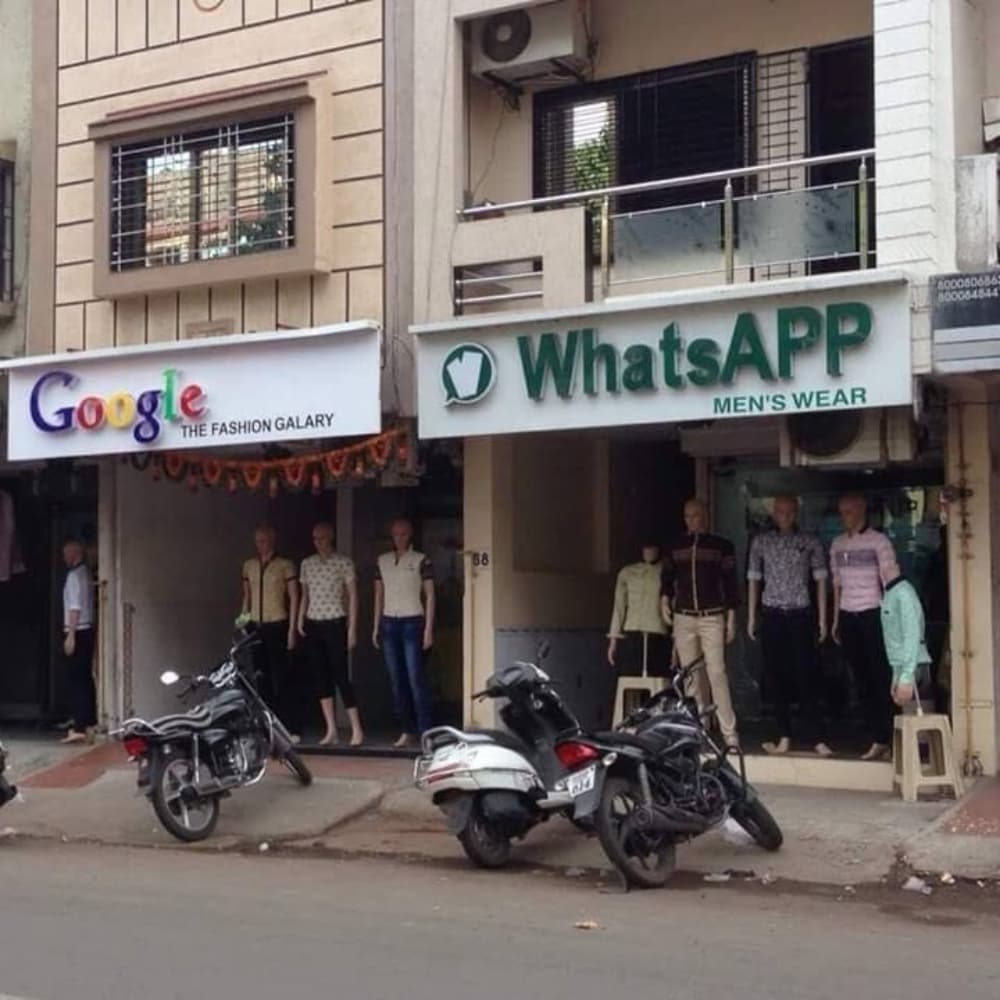
Clothing stores with the name of Google or WhatsApp. Restaurants called TikTok or Facebook. Even streets named Apple or Instagram. Seeing your favorite brand, or at least your favorite app, in India, at the supermarket or on a menu, is rather common.
Multitasking
People in India have to be some of the most creative on the planet. In many cases, people having up to 3 jobs a day is not unusual. Some of these jobs have to be done at the same time. It’s tough.

That’s why images like the one above are so common in India. A security guard at a bank also making dresses and working diligently on his sewing machine. It’s a picture-perfect example of the lengths people will go in India to make it.
Where to start
Where to start: first of all, based on the kid taking a selfie, and the two guys laughing, we assume no one was hurt here. And we hear that traffic in India just might be some of the worst in the world.
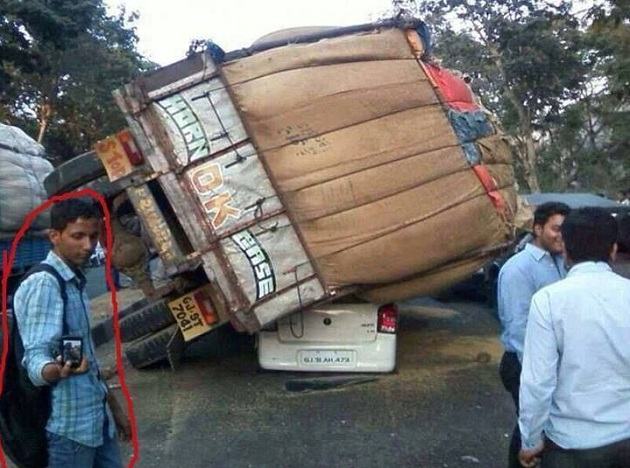
Since everyone was clearly alright in the end, we have to ask: what is going on here?! That poor white car got absolutely crushed. It looks to us like the truck was filled to the brim with too much stuff.
Locks
ATMs are open 24/7 in India, and some of them become a refuge for just about everything you can imagine. In India, unless the bank hires out a security firm or there’s a guard in place inside the ATM, a picture like the one below are common.
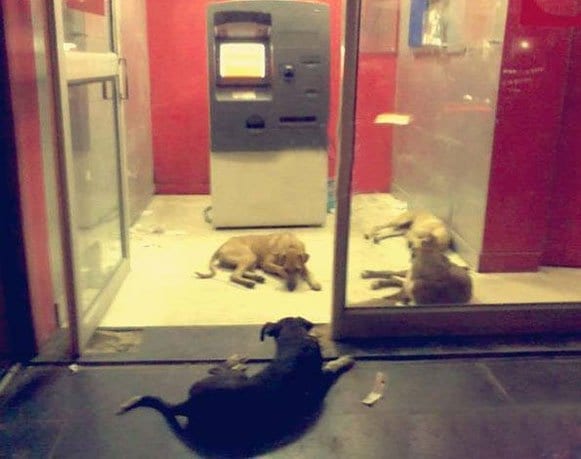
People, dogs, cats, cows, monkeys – just about everything uses an ATM for temporary shelter on hot Indian nights. They afford a certain level of comfort and protection and, in many cases, due to India’s cataclysmic monsoon rains, are government-designated shelters.
Ticket, Please.
The symbolic significance of animals in India, particularly in Hindi, is that they are the vehicles of gods. That’s why certain animals basically have the run of the pace and can literally do as they please. And why this cow was able to jump ahead in line.
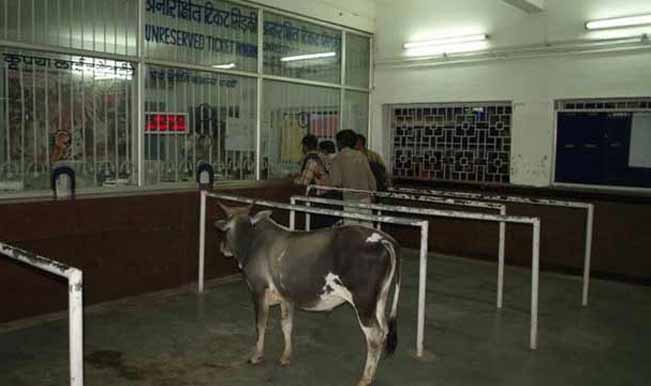
He must have somewhere really important to go, and we’re sure he will have no issue getting the proper help he needs to make it to his destination. Maybe he has a meeting with the monkey we saw hitching a ride on the motorcycle.
Religion Specific Warnings
“Only those who strongly believe in rebirth should risk going near.” The warning is highlighted by a tiger and crossbones. Ominous, right? Well, in India, warnings like that are everywhere. Wildlife roams freely, and sometimes animals stray into populated areas.
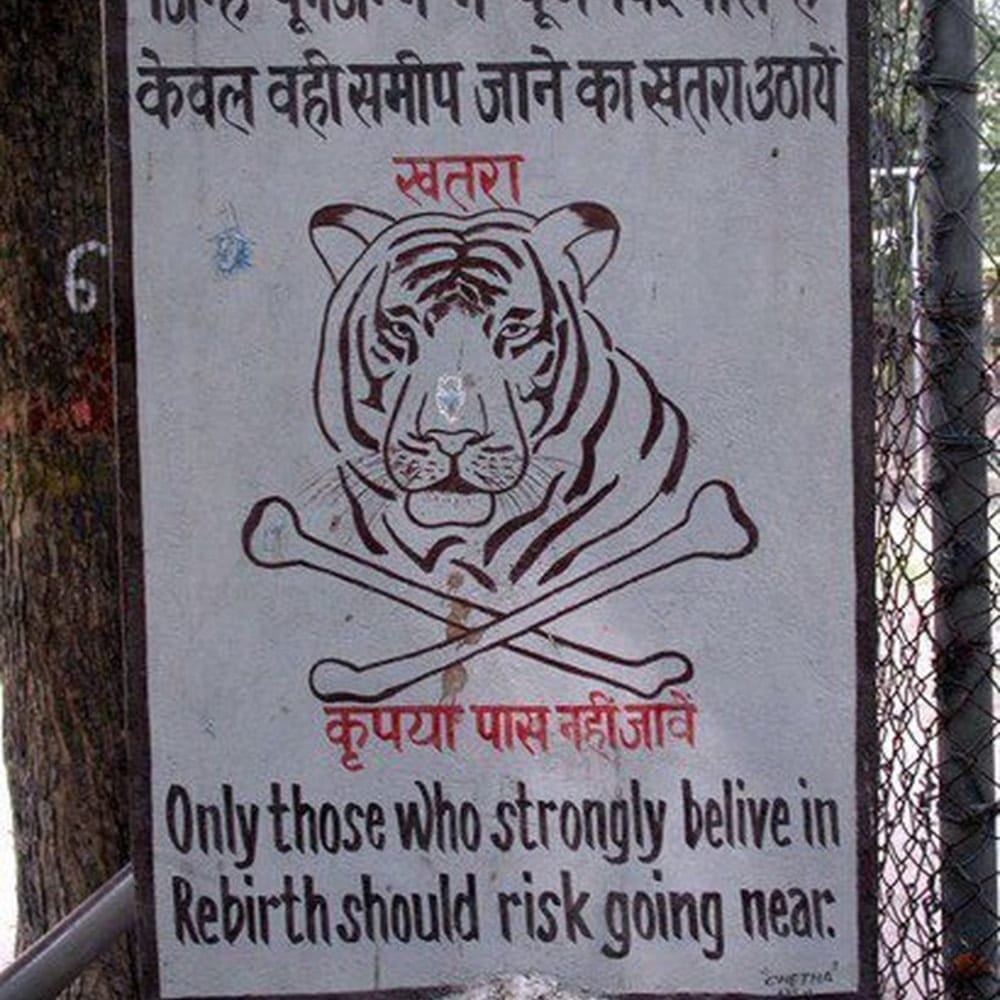
This is an interesting way to say, “danger! Keep out!” It’s more subtle, and a little bit funny. To us, seeing a tiger means we are at the zoo for a fun-filled day. In India, though, they walk around more or less freely. Though, they usually stay in the jungles, where it’s quieter.
SFC
Copyright laws are a joke in India. Even regional franchises infringe them and do as they please. The laws are extremely lax, they haven’t been updated since the 50s, and the oversight committee dedicated to enforcing them is all but imaginary.
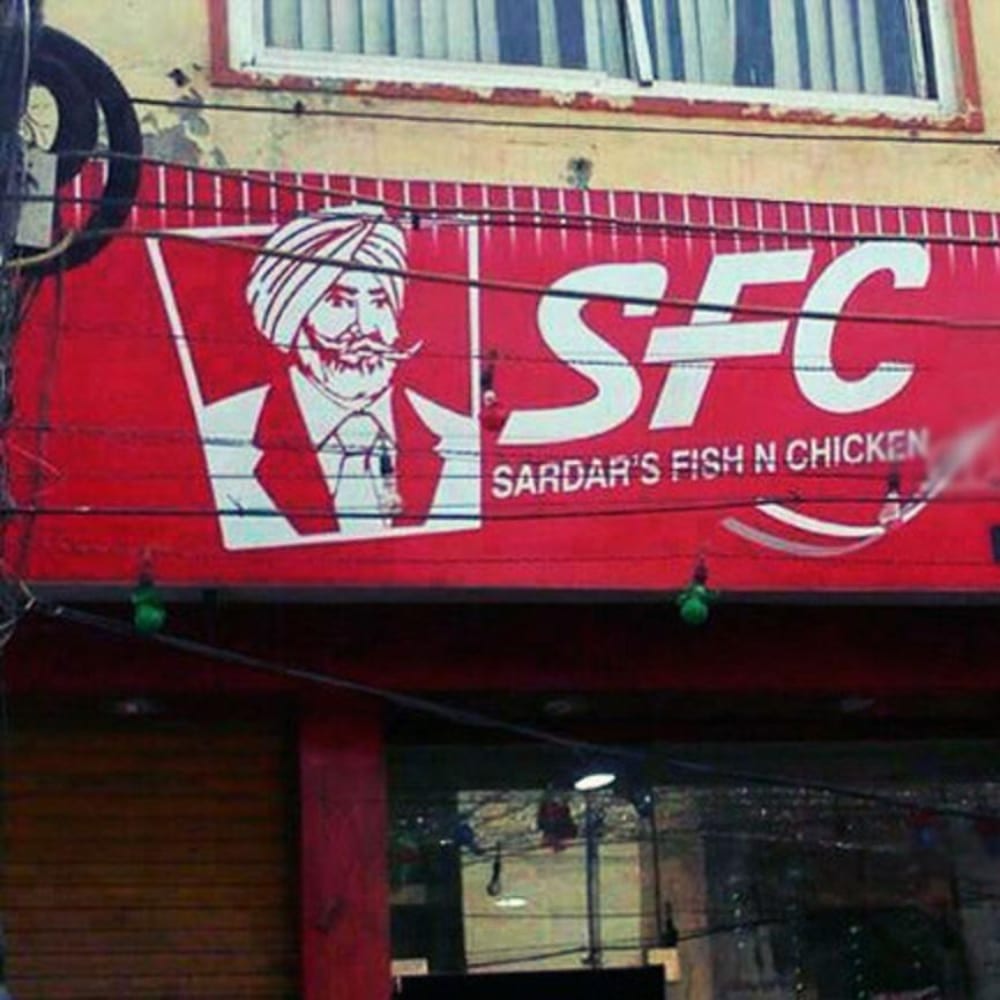
That’s why blatant copies, like the one above, of international brands and franchises are extremely common. Normally, you can find something of this nature on just about every street corner in India. They are everywhere, and some don’t even try to disguise it.
Auto-repair
Duct tape, the wonder tool! In India, owning a car is already a luxury. Fixing it and maintaining a car is an annoying task, no matter where you live. Prices for auto parts are always through the roof, and in many cases, people have no other choice but to improvise.

If you crash your car in India, you’ll most likely have to get creative with a fix. It’s not just that the parts are expensive; it’s that the waiting period for mechanics is usually pretty long. This looks like it works just well enough to get back out on the road.
Self Built
Mutant cars are another cool facet of India’s automobile craze. People build their own transportation out of whatever they have on hand. Cars like the one below, which can be seen on almost every street corner of the country, are commonplace.
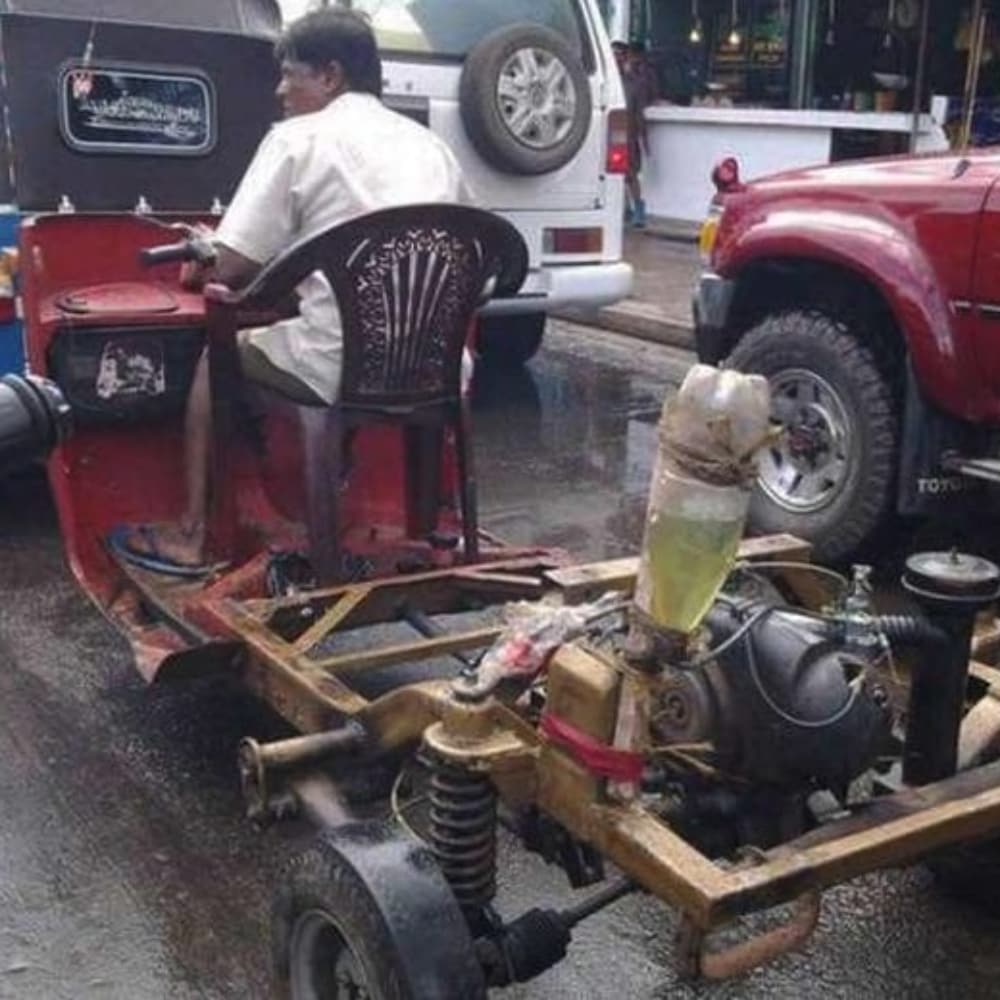
Is anyone thinking Doc from Back to the Future would love this? Just Us? Our real question is: would you ride along? We probably would, because, as they say, “when in Rome” – so when in India, you might get to ride in a homemade car!
Split A/C
The temperature in India ranges from 28ºF to 104ºF. That’s the average. Normally the most populated cities don’t experience anything below 77ºF. In summer, the thermometer can climb up to 116ºF! And you still haven’t even factored in the humidity.
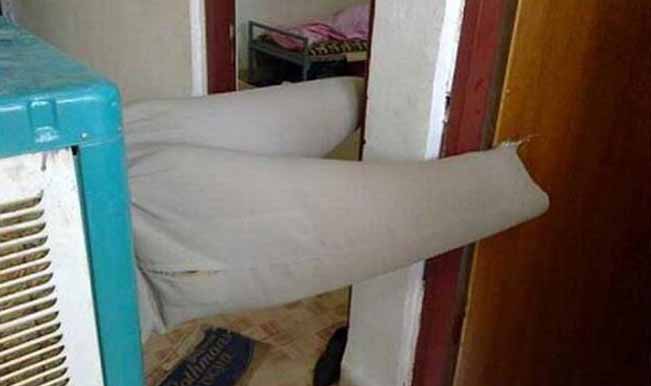
India is an extremely humid country and, coupled with its temperature, an A/C isn’t just a must; it’s your only line of defense against dehydration and feeling ill. That’s why almost everyone has an A/C. And, like in the picture above, they find ways to share their power among family members.
Snakes
The Indian Cobra, also known as the Asian Cobra or the Spectacle Cobra, can be found just about anywhere in the region. It is one of the “big four” snake species in the country that inflict the most snake bites on humans.
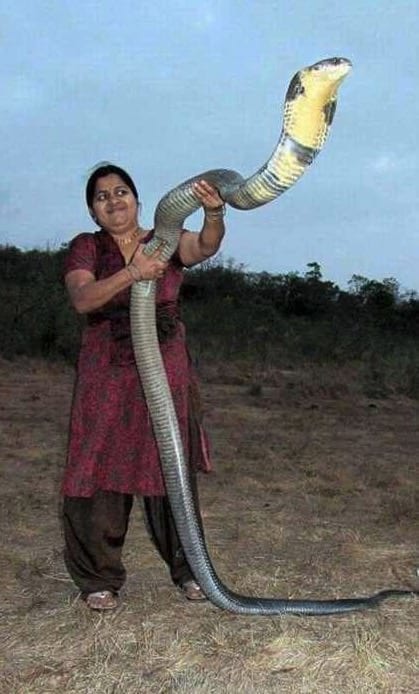
We definitely want this woman with us on our travels. Look at that confidence, that calm. She is so cool, we don’t think we could even try to be friends with her. But maybe she can teach us her snake charming ways.
Flooding
India is one of the regions that is most prone to flooding. To what extent? Well, to the extent that the fact that people, as pictured below, don’t even consider it an issue. It’s just part of everyday life and, in many cases, doesn’t even warrant acknowledgment.
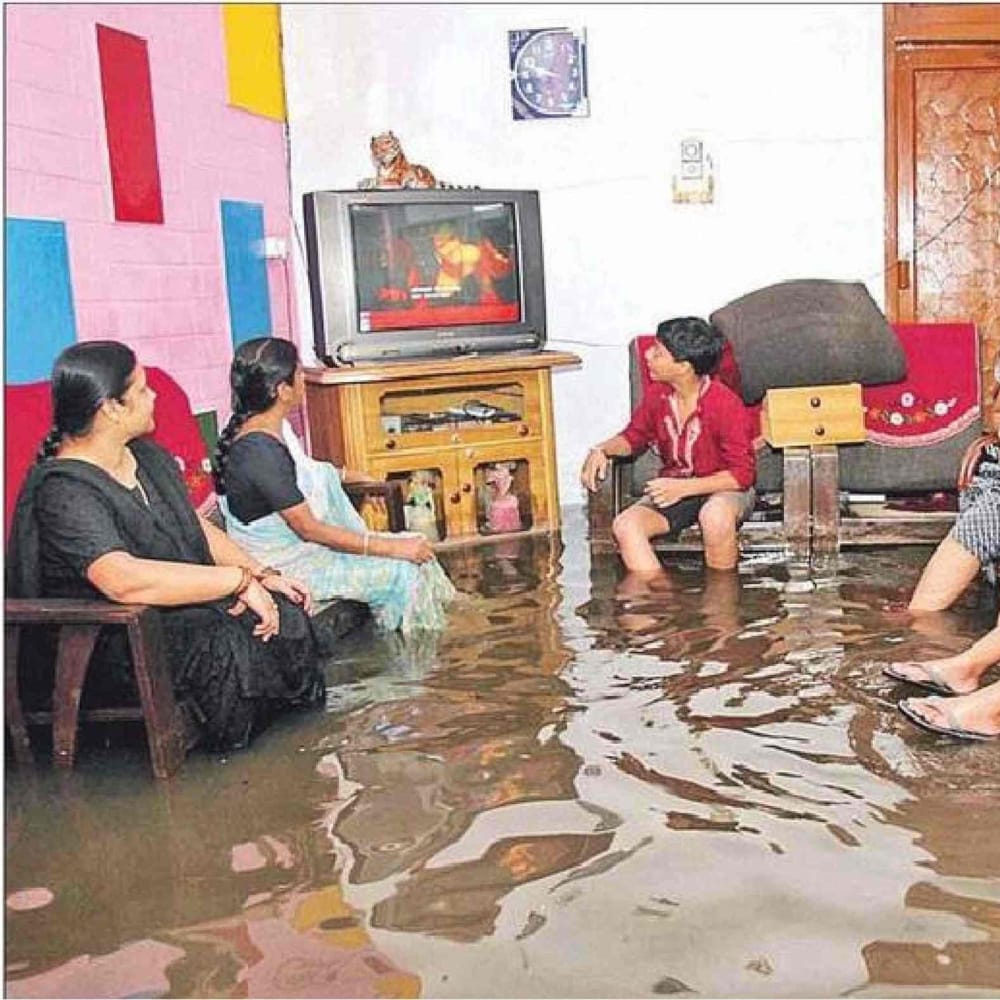
We love their level of chill. Our kind of people are those who can take anything as it comes and remain calm. Living with flooding like this can’t be easy, but this family is prepared. They really know how to go with the flow.
Public Transport
The Bus Rapid System (BRTS) is the main source of public transportation in India. Busses account for more than 90% of public transportation in the region, and several – if not all – the main services are run by the governor.
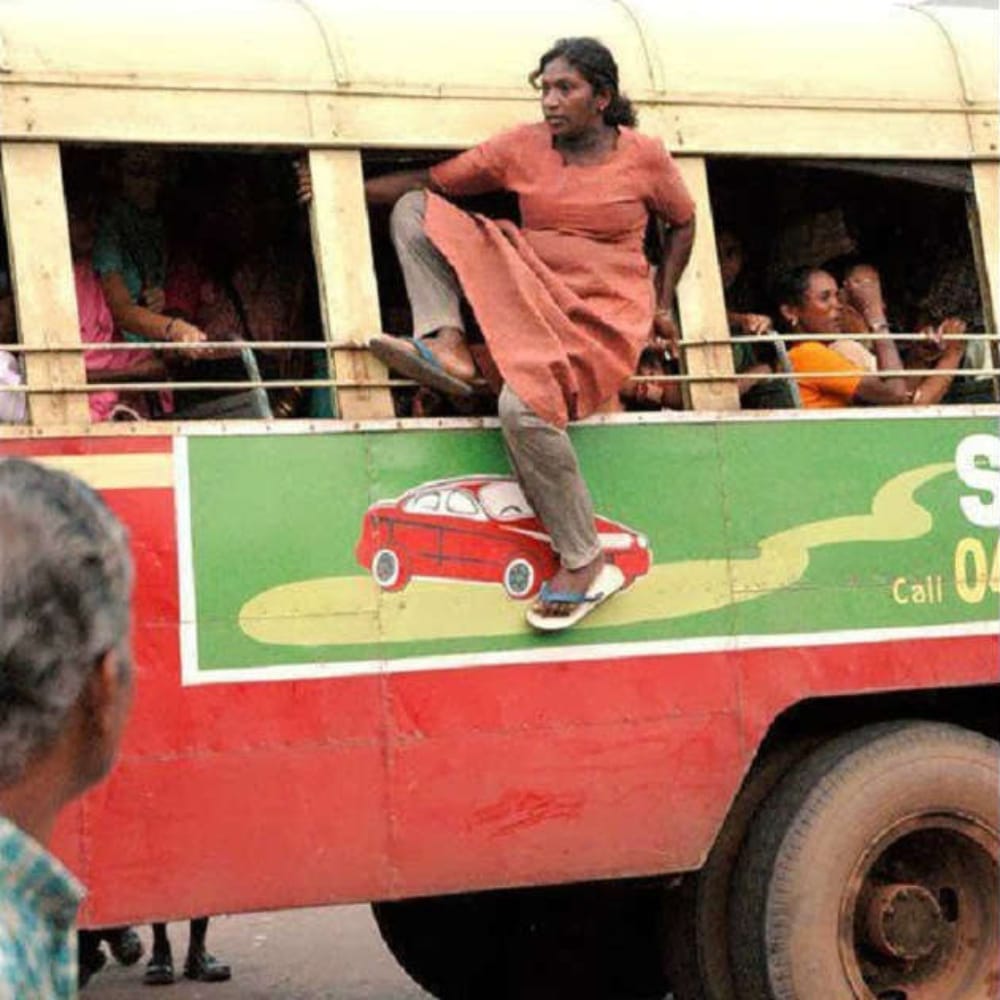
Another lady we admire for her spunk. If you have somewhere to be, you have to use ingenuity to catch a ride sometimes! The public transportation system still needs a lot of work, but the people know what to do!
Public Transportation Redux
We had to add another picture about the public transportation in India. Well, more about the people transporting themselves, really. Are all the women in India as cool as the ladies in our list? We get the feeling that maybe they are.
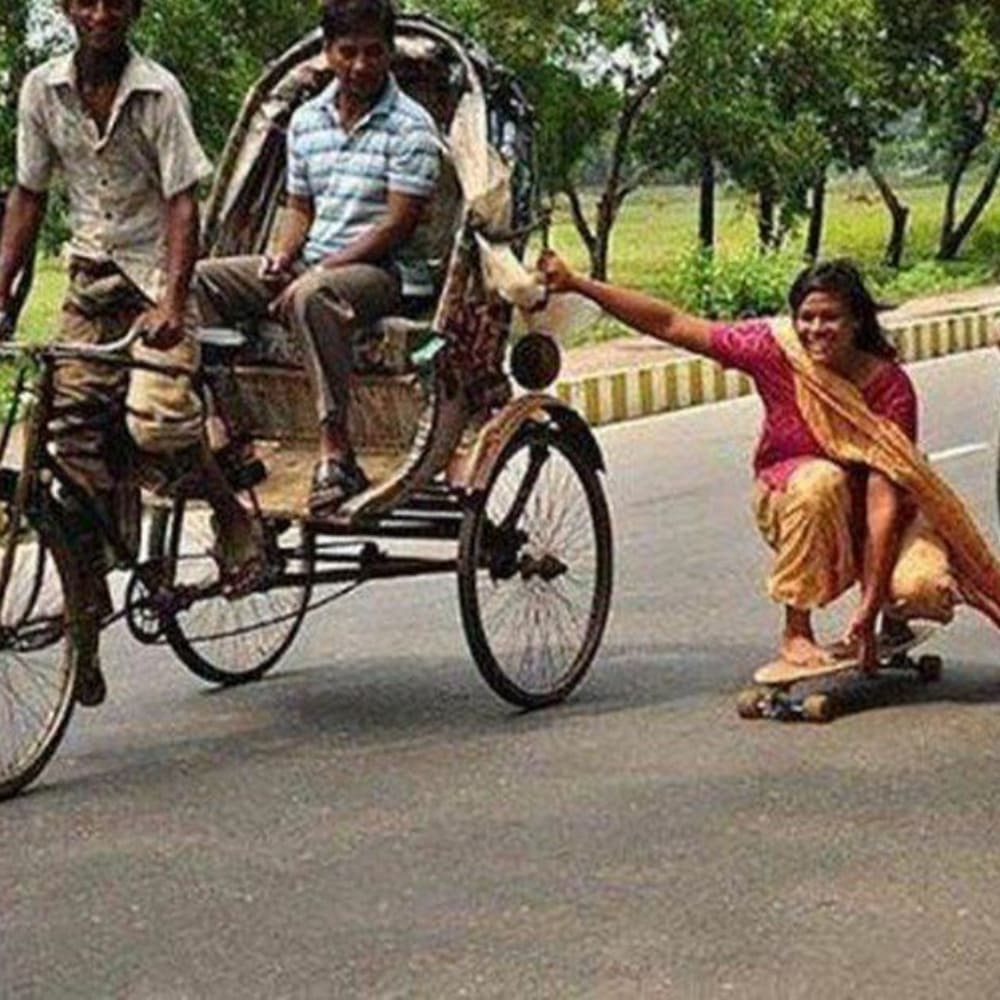
Just look at her! Look at that form, the confidence, the joy. She is having a great time getting to where she needs to go. It took us a while to realize what she is being pulled by, because of how cool she is.
Weddings
That man below is, as odd as it might seem, tied to India’s happily ever after institution. That’s right; he’s a wedding inspector. What exactly is that? Well, we’ll tell you in a jiffy. Just read ahead and stay tuned.
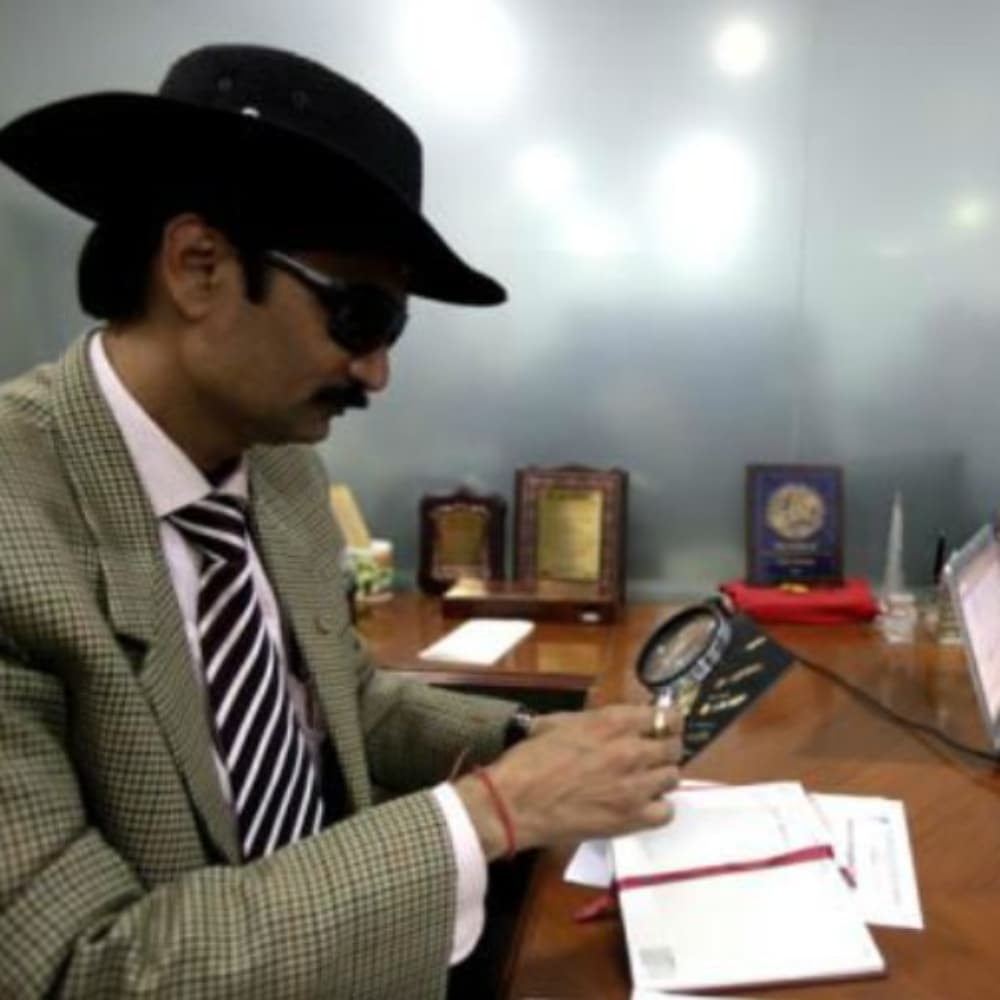
Wedding inspectors validate that everything in your nuptials went according to contracts signed by family members. In India, arranged weddings are still a custom, and those contracts and agreements have to be analyzed by an objective party; hence that photo above.
Electricity
The region is both the third-largest consumer of energy in the world as well as the third-largest producer of it. Electricity was introduced by the British during India’s colonial period. The first generator was brought to Darjeeling in 1896.
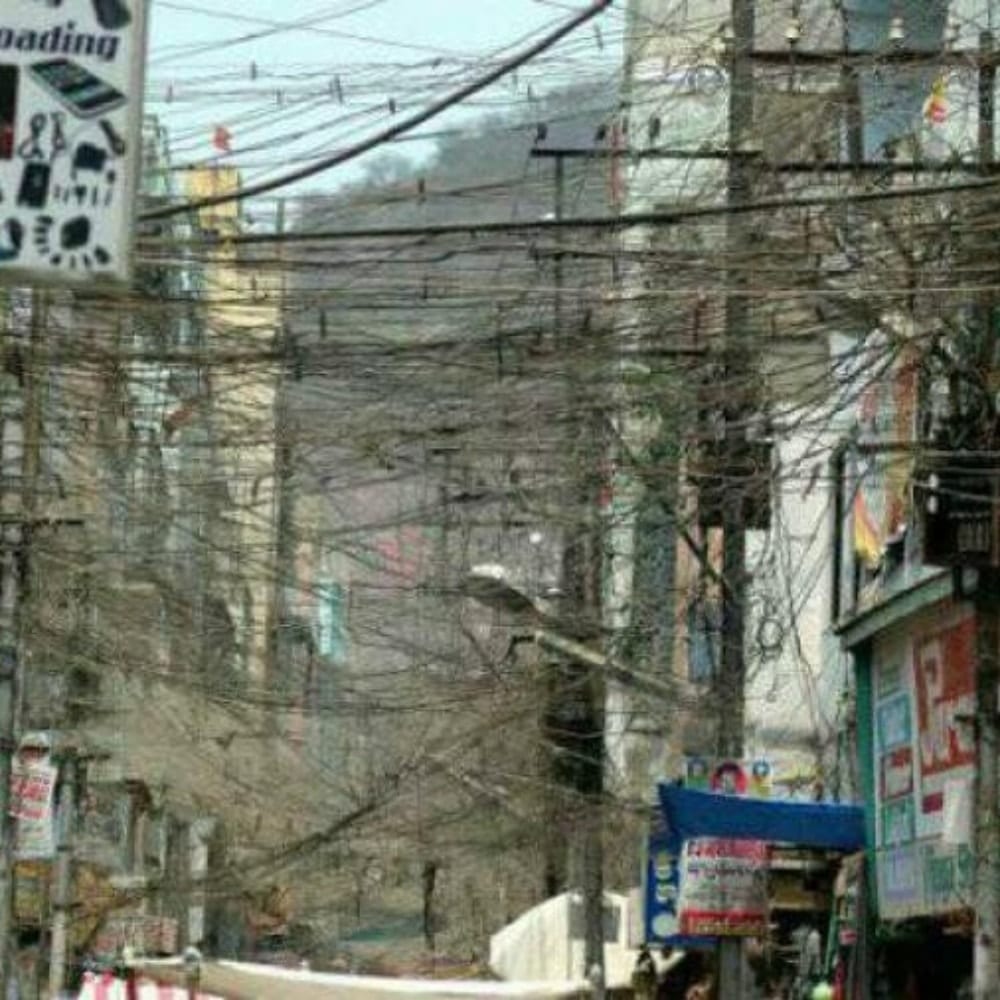
The first Power Station in Darjeeling produced 120kW and was mainly for the tea plantation in the region. Nowadays, India’s electrical grid has an install capacity of, well, a lot. As you can see from all those powerlines, electricity is just as vital in India as anywhere else.
Ganesh
When Ganesh needs to travel, Ganesh gets VIP treatment in India. Elephants are widely revered in the area, and it is considered a good omen when one stumbles onto your path. People will go out of their way to help an elephant.
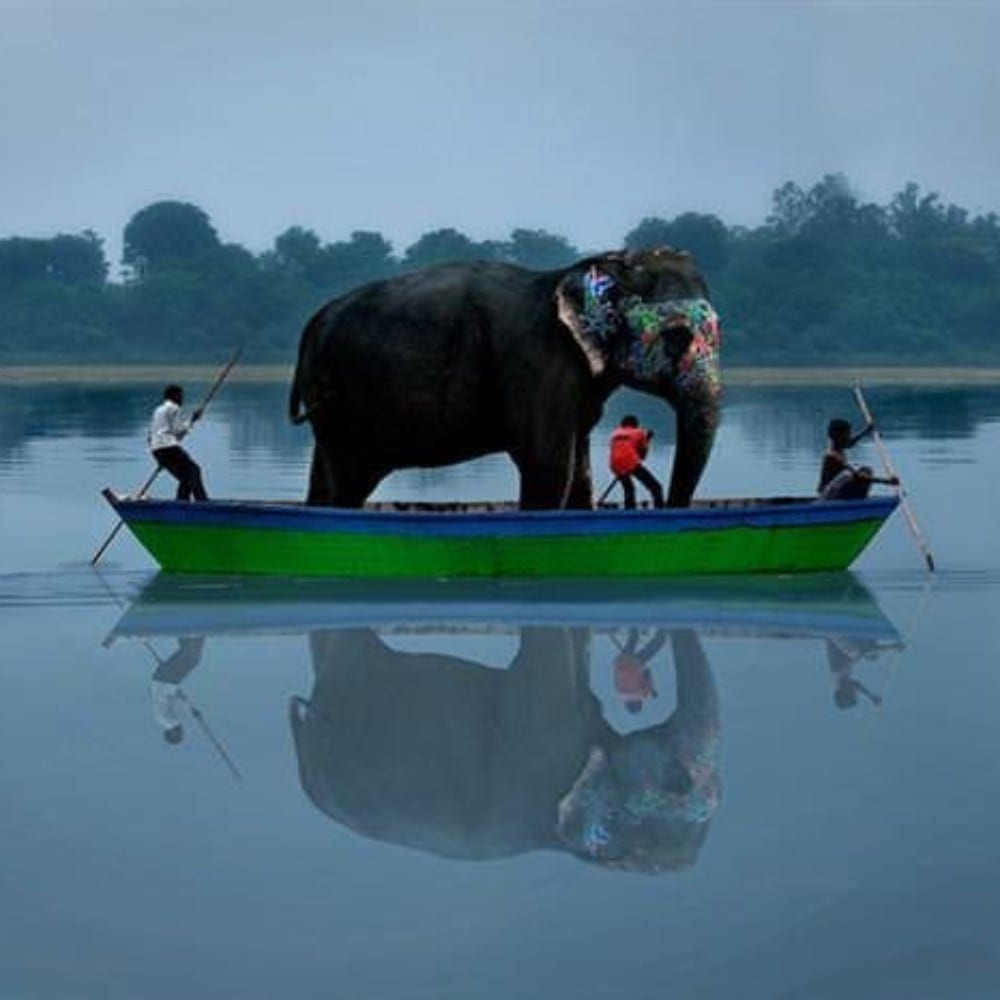
Devotees are confident that Ganesh will grant them prosperity and protection against adversaries if they help him out. There are hundreds of festivals associated with Ganesh, and worldwide he’s one of the most iconic and revered figures of India’s pantheon of the divine.
Soccer Fan
Soccer is extremely popular in India. It’s one of the most played sports in the area, and matches are watched throughout the region almost religiously. That’s why pictures like the one below are rather normal. The screen may be small, but they all look pretty content.
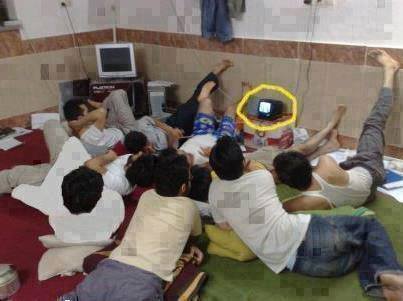
Did you know that India has never played in the World Cup? They have had no entries in the tournament since 1950. Why? There are many rumors and suppositions, but the main one is that India withdrew when FIFA imposed a rule forbidding players to play barefoot.
TV Everywhere
How much is India’s television industry valued at? More than 13.6 billion dollars. India produces a lot of quality shows and movies. People in India value their TV and, like A/C, they’ll go out of their way to buy a TV.
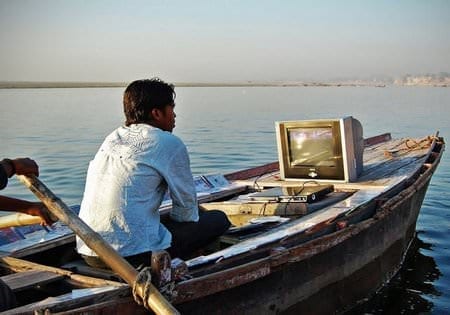
TVs are major economic players in the area, and in any case, it’s one of the most purchased appliances. Television sales have only escalated on a yearly basis, and experts think that by the year 2026, India might even rival the US’ consumption.
The World’s Largest Family
The World’s Largest Family resides in India. Ziona Chana holds the world record for being the head of the world’s largest family. The man has 39 wives, 94 kids, 14 daughters-in-law, and 33 grandchildren. They live in Baktawng Village in Mizoram, India.
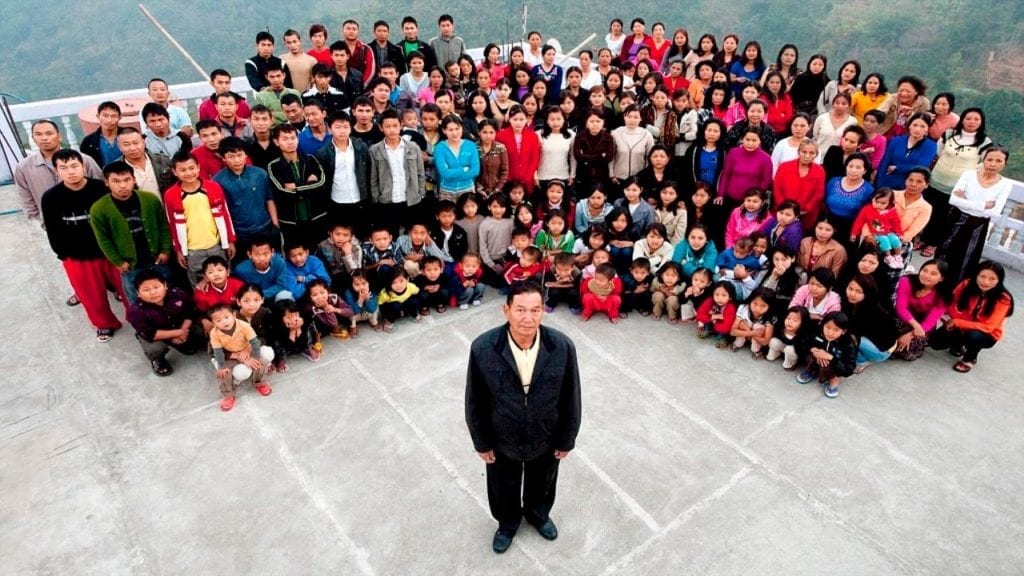
Ziona Chana is the leader of a Christian sect formed in 1942. The sect is called “Chana Pawl” and was established by the man’s father. He first came to the world’s attention when his kin was featured on Ripley’s Believe It Or Not!
Toilet Museum
The Sulabh International Museum Of Toilets in Dehli is by far one of the world’s strangest museums. Time magazine once labeled it as one of the “10 museums around the world that are anything but mundane.” The museum was established in 1992.
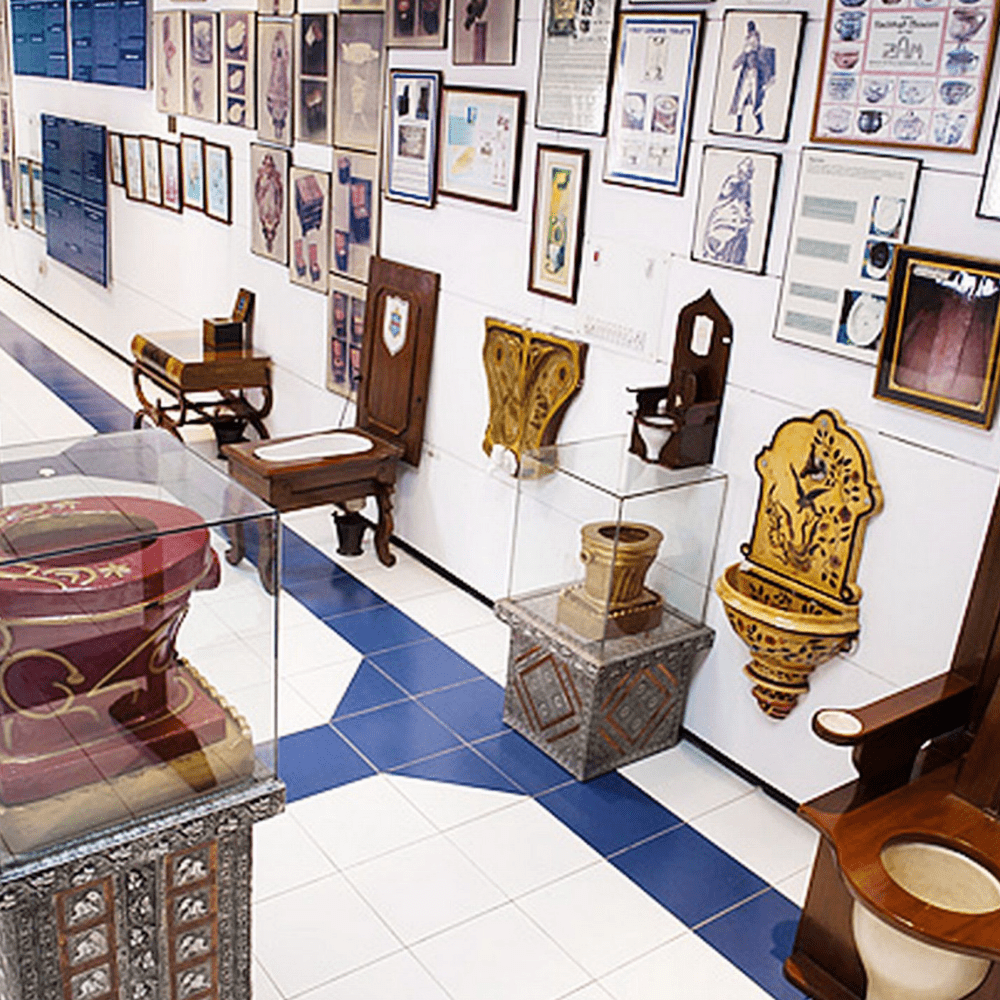
The museum is dedicated to the global history of sanitation and toilets. It was created by Dr. Bindeshwar Pathak with an objection to highlight the importance of sanitation in the country. It’s won multiple international awards, including the Stockholm Water Prize of 2009.
Spa day
As we’ve previously said, elephants are among India’s most sacred and best-loved animals. There is the avatar/ vehicle of the elephant-headed Hindi god, Ganesh. Ganesh is the god of beginnings, and he’s one of the region’s most famous and worshiped deities.
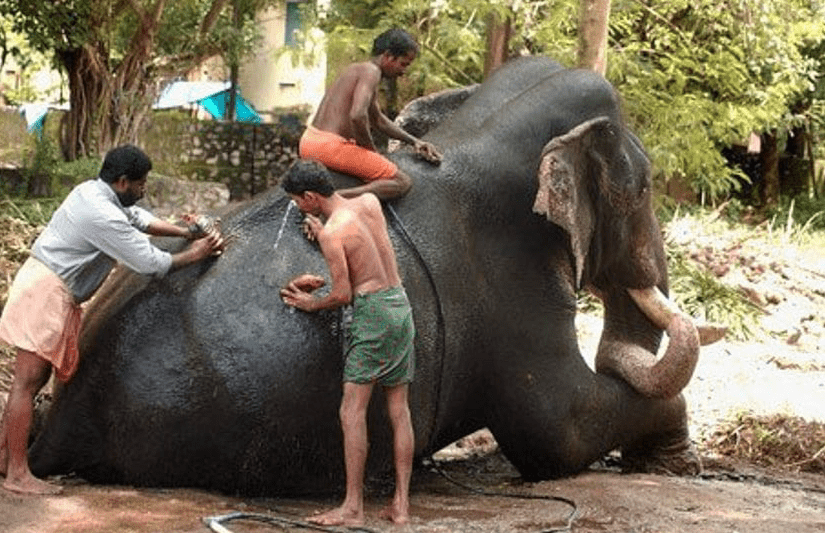
This elephant is enjoying some spa treatment from these dedicated people. He looks quite relaxed and like he is enjoying himself. We wouldn’t mind a spa day ourselves, but are glad this guy is getting some TLC and is cooling off in the heat.
Airport Food
Rituals and traditions are an important part of Indian culture. There are over 6 million different regions and faiths in India. Many tribal religions are still very active in certain parts of the region, including in the airport, or more specifically, on the runway.
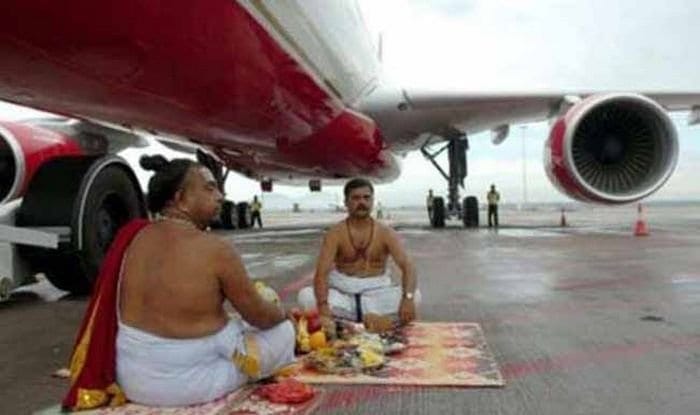
Nonetheless, the 6 most prevalent religious factions in India are divided into Hindus, Muslims, Christians, Sikhs, Jains, and Buddhists, and are also known as Dharmic religions. India is a multi-religious country and one where its populace heavily enforces traditions.
Onions
Onions, as well as spices, are part of the culinary stable of India. Almost all meals have onions. In India, onion crops have an annual production of over 19.40 million tons. It is one of their most invaluable produces and exports.
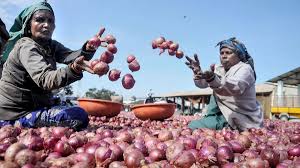
There are about 1.20 million hectares devoted to onion farming, and the are three sowing seasons for the crop, Kharif, Late Kharif, and Rabi. The picture above of people peeling and dicing onions is rather widespread, and everyone who has ever visited India has probably returned home with a similar photo.
You’re Welcome
Before we slip off and bring this article to a close, here are some extra stats about India. India’s forests cover over 21.4% of its area. Its wildlife has traditionally been viewed with tolerance and appreciation amongst its citizens. And it has many protected habitats.
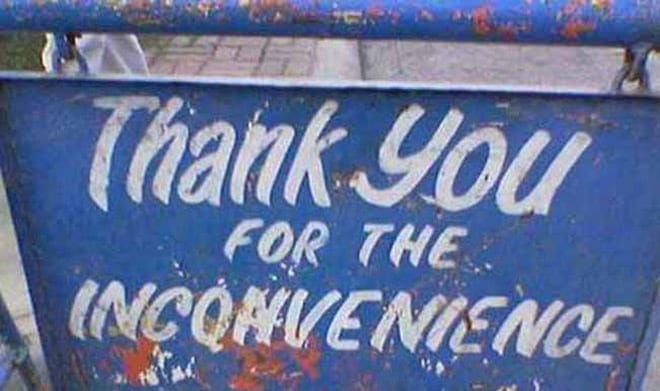
Should you even visit, you could spend your trip never wanting to leave and planning your next trip to this magical place. In addition, you will get some chuckles at funny translations like this one, feel inspired, and have a wild time.
